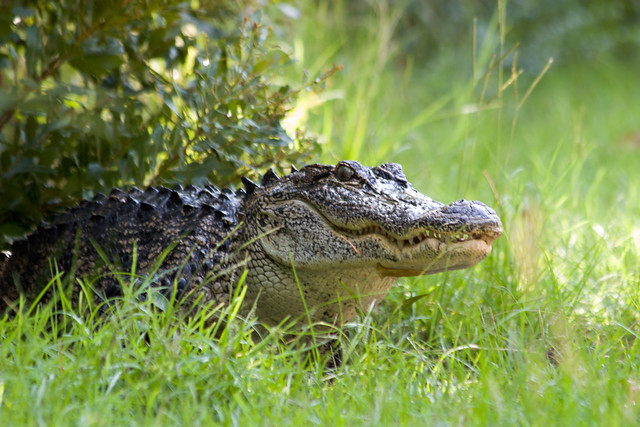When does a alligator become a knobbly monster? Let’s find out.
Some journalists tend to use alternative ways to refer to the subjects of their articles when mentioning them for the second (or third) time, rather than using the same word twice.
Apparently in an article about alligators, journalist Paul Hudson, referred to them as reptiles then the knobbly monsters. Such alternative descriptions became known as knobbly monsters as a result. They are also known as gratuitous synonyms, pov or popular orange vegetable (a.k.a. the carrot), and American writer and journalist Charles W. Morton (1899–1967) referred to this practice as the ‘the elongated yellow fruit school of writing’.
In 1926, H. W. Fowler (1858-1933), an English schoolmaster, lexicographer and commentator on English usage, wrote in his book A Dictionary of Modern English Usage:
“Elegant variation. It is the second-rate writers, those intent rather on expressing themselves prettily than on conveying their meaning clearly, & still more those whose notions of style are based on a few misleading rules of thumb that are chiefly open to the allurements of elegant variation” [source]
At that time, elegant was a disparaging adjective for pretentious or precious refinement.
Other examples of knobbly monsters / elegant variation include:
- The watery playground (paddling pool)
- The whirring powertool (chainsaw)
- Large balls of the freezing ice (hail)
- The pepperpot-shaped trundling nasties (Daleks)
- The tentacled monster (Giant squid)
- The chunky chin-blankets (beards)
- The red-jacketed festive gift-bringer (Santa)
- The fatty breakfast treat (sausage)
- Elongated yellow fruit (banana)
- The numbered spheroids (billiard balls)
- Hen-fruit safari (Easter egg hunt)
- Succulent bivalves (oysters)
- Rubber-tired mastodon of the highway (truck)
- Succulent bivales (oysters)
- The toothsome cocoa-based delight (chocolate)
Here’s an actual example of a knobbly monster in the wild [source]:

Elegant variations for everyday terms were commonly-used in Old English and Old Norse poetry, and were known as kennings. Examples include báru fákr (wave’s horse) for ship, hron rade (whale’s road) for sea and grennir gunn-más (feeder of raven) for warrior [source]
Sources: https://www.bbc.co.uk/lancashire/fun_stuff/2004/09/07/monsters.shtml
https://mistakeswritersmake.com/knobbly-monsters/
https://pjhoury.com/knobbly-monsters/
https://en.wikipedia.org/wiki/Charles_Morton_(editor)
https://en.wikipedia.org/wiki/Elegant_variation

